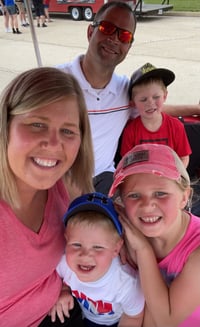By Andrea Hasbrook on Apr 28, 2023 3:00:06 PM
After a long, cold Illinois winter, I've been longing to see the sun. Two weeks ago, it was abnormally warm for spring weather. I have three blonde-haired, fair-skinned kids so I am usually very diligent about sunscreen. However, that week we spent every possible moment soaking up the warm sun! ![]()

While winding down that Sunday night, I realized we were all a bit sunburned #momfail. I was so excited about the warmth that I didn't apply sunscreen as I should have. That was all it took to remind me how much easier it is to PREVENT burns rather than treat DAMAGED skin.
Much like skin, damage to conveyor belts can be prevented.
Identify, treat, & PREVENT different kinds of belt damage
Abrasion and tension are responsible for a large portion of conveyor belt damage, but other forms of stress such as heat damage also contribute.
If and when a large or sharp object gouges the belt, the top cover becomes scarred and damaged.
Usually caused by belt mistracking, the constant friction against the belt begins to wear it away.
If material is allowed to become trapped underneath the skirting system, it will eventually grind against the belt.
Normal wear and tear and other stressors cause weak joints to separate from each other.
When materials are loaded onto the belt or conveyor components that are incorrectly installed fall onto the belt, the top cover becomes eroded.
Rip and Grooves from Foreign Objects
If material scraps become lodged in a chute or other mechanism, they can quickly tear through or groove the top cover or even the belt carcass.
In general, structures and machines tend to have their greatest weaknesses at seams or points of transition, where stresses are not acting upon a single, consistent surface. Junction-joint failure can be seen as a “W” or “M” shape in the belt as it passes over a return roller.
Certain stresses will cause a belt to warp, curving up or down on each edge depending upon the specific circumstances.
Belt camber is identified by the warping of a belt to create a curved bow shape when laid out flat.
In closing, the next time you are gearing up for a day in the sun, be proactive and prevent sunburns. And, the next time you see warning signs of belt damage, try to properly identify what is causing the problem and correct it. Better yet, prevent damage in the first place! Belts are expensive, there is no need to let them undergo unnecessary damage.






comments